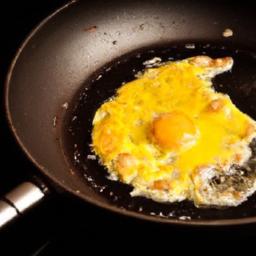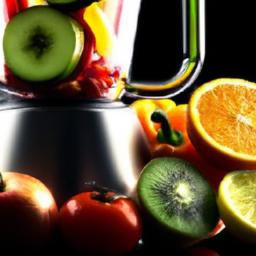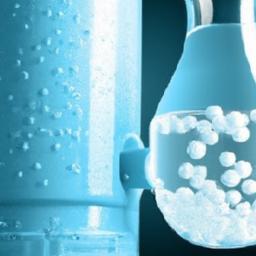Omelette Pan vs Frying Pan: The Ultimate Breakfast Cookware Showdown
Deciding whether to use an omelette pan or a frying pan might seem straightforward, but the reality is more nuanced. At How To Cook Gourmet, we’ve discovered that choosing the ideal pan can truly transform your breakfast game. Both pans have unique advantages, especially when it comes to cooking eggs, but which one really deserves a spot on your stovetop?
Breakfast Battle: Omelette Pan or Frying Pan?
Think of choosing between an omelette pan and a frying pan as selecting the perfect partner for your morning culinary routine. Each tool offers distinct advantages that tailor to different breakfast demands.
Omelette pans are designed with lower, gently sloping sides and a smooth, often nonstick surface that makes folding and flipping delicate eggs a breeze. Imagine trying to fold a crepe on a rough, uneven surface – that’s the challenge an ordinary pan asks you to conquer. Omelette pans simplify this process.
Meanwhile, frying pans boast taller edges and broader cooking surfaces, making them incredibly versatile beyond just eggs. From sizzling bacon to fluffy pancakes and sautéed vegetables, frying pans adapt to a variety of breakfast classics. However, their higher sides can complicate delicate flips and folds.
| Criteria | Omelette Pan | Frying Pan |
|---|---|---|
| Side Height | Lower, curving for easy flipping | Higher, straight for varied cooking |
| Surface Type | Typically nonstick | Varies: nonstick, stainless steel, cast iron |
| Ideal For | Egg-focused dishes, soft textures | Wide range of breakfast foods |
| Cleaning | Generally quick and simple | Depends on material; some require more upkeep |
Your choice largely depends on whether you prioritize crafting flawless omelettes or prefer a multi-use pan capable of handling diverse breakfast recipes. For the egg aficionados, an omelette pan edges ahead in delivering flawless breakfast results.
Why Pan Size and Contours Influence Cooking
Size and shape aren’t just aesthetic choices – they significantly impact cooking performance. Trying to maneuver eggs in a giant pan can be as challenging as flipping pancakes on a crowded grill.
Omelette pans typically range from 8 to 10 inches with gently curved, low sides, designed to let eggs slide and fold effortlessly. Frying pans, often larger (10 to 12 inches or more), have higher, straighter rims to accommodate bigger quantities or foods requiring tossing and stirring.
| Pan Type | Design | Diameter | Cooking Uses |
|---|---|---|---|
| Omelette Pan | Shallow with sloped edges | 8-10 inches | Egg dishes, omelettes, delicate flips |
| Frying Pan | Deeper with vertical sides | 10-12+ inches | Meats, sautés, larger meals |
Think about your daily cooking habits: do you mostly prepare eggs or broader dishes? Selecting a pan with suitable dimensions will prevent unnecessary struggles and elevate your culinary precision.
The Role of Nonstick Surfaces in Achieving Breakfast Perfection
Nonstick coatings revolutionize cooking by preventing food from sticking, allowing omelettes and eggs to slide out flawlessly – much like a figure skater gliding smoothly across ice. Without a quality coating, eggs can adhere stubbornly, leading to frustration and uneven cooking.
Choosing the right nonstick technology impacts health, taste, and maintenance:
- Teflon: The classic choice offering great ease of use but vulnerable to scratching and degradation over time.
- Ceramic: A newer alternative free from some chemicals found in traditional coatings, with impressive heat tolerance but often less durable.
- Hard-Anodized Aluminum: Exceptionally tough, providing longevity and effective heat performance.
| Coating | Heat Tolerance | Durability | Care Guidelines |
|---|---|---|---|
| Teflon | Medium | Moderate | Gentle cleaning, avoid metal utensils |
| Ceramic | High | Moderate to Low | Use soft tools, avoid abrasive cleaners |
| Hard-Anodized | High | High | Standard maintenance, more forgiving |
Expert tip: avoid metal spoons or scrubbing pads to extend nonstick lifespan. Wooden or silicone utensils preserve the coating and your pan’s performance.
Heat Distribution: The Secret Behind Perfectly Cooked Eggs
The way heat disperses across your pan makes all the difference between evenly cooked eggs and burnt, uneven patches. High-quality omelette pans often feature thick, heavy bottoms engineered for uniform heat spread.
Frying pans sometimes have thinner bases, which may cause hot spots leading to burnt edges or undercooked centers, especially if you’re aiming for delicate eggs.
| Pan Type | Heat Distribution | Optimal Use |
|---|---|---|
| Omelette Pan | Consistent and even | Soft, tender eggs |
| Frying Pan | Occasionally uneven | General frying and searing |
- Omelette pans maintain steady low to medium heat ideal for gentle cooking.
- Frying pans heat quickly but require more attention to avoid burning.
- Steady heat allows precise timing and reduces guesswork.
Mastering heat control starts with selecting a pan designed to perform consistently.
Pan Surface Types: Navigating Stickiness Challenges
Nothing is more disheartening than an omelette refusing to budge, sticking stubbornly like it’s glued to the surface. Pan texture and finish heavily influence this experience.
- Nonstick: Glide-friendly surfaces enable smooth flipping and minimal sticking.
- Stainless Steel: Can cause sticking unless you expertly regulate heat and oil.
- Cast Iron: Requires seasoning and care; once properly maintained, offers excellent flavor and some natural nonstick properties.
| Pan Surface | Stickiness Level | Best Applications |
|---|---|---|
| Nonstick | Low | Eggs, pancakes, delicate cooking |
| Stainless Steel | Medium to High | Searing, browning, high-heat cooking |
| Cast Iron | Medium (when seasoned) | Steaks, frying, slow cooking |
If you often struggle with sticking, reevaluate your pan choice and cooking technique. A little patience and the right surface treatment will enhance your kitchen success.
Which Pan Saves Time and Effort – Cooking and Cleaning?
Speed and cleanup efficiency are crucial on busy mornings. Omelette pans, thanks to their nonstick coatings and ergonomics, typically provide both. You can cook quickly and wipe them clean with minimal effort.
Conversely, frying pans’ cleaning demands vary widely with material. Nonstick frying pans are easier to maintain, while cast iron requires special handling and stainless steel often needs more rigorous washing to remove stuck-on residues.
| Pan Type | Cleanup Speed | Maintenance Method |
|---|---|---|
| Omelette Pan (Nonstick) | Fast | Wipe clean or hand wash gently |
| Nonstick Frying Pan | Moderate | Hand wash with mild detergent |
| Cast Iron Frying Pan | Slow | Soap-free scrub, seasoning upkeep |
When pressed for time after a rushed breakfast, the omelette pan often wins for efficiency.
Material Durability: Long-Term Pan Longevity
Durability is key to making a wise cookware investment. Omelette pans are frequently made of lightweight aluminum with a protective nonstick layer, balancing ease of use with medium lifespan.
Frying pans are produced from diverse materials, each with properties affecting lifespan and maintenance:
| Material | Longevity | Care Notes |
|---|---|---|
| Aluminum (Omelette Pan) | Moderate | Handle gently; avoid metal tools |
| Stainless Steel (Frying Pan) | High | Dishwasher safe; low maintenance |
| Cast Iron (Frying Pan) | Very High | Requires seasoning; vulnerable to rust if neglected |
| Copper (Frying Pan) | High | Needs regular polishing; premium price |
Look for pans with sturdy, layered bases and solid, riveted handles to withstand kitchen wear and tear without warping or loosening.
- Peeling coatings, wobbly handles, or warped bottoms signal it’s time for a replacement.
- Heavier, well-constructed pans commonly outlast their lighter counterparts.
Marrying Pans to Your Cooking Preferences
Choosing cookware is comparable to picking a character in your cooking routine. Which pan best enhances your workflow will depend on your typical recipes and style.
Omelette pans, with their sloping sides and nonstick finishes, excel at delicate egg dishes where flipping agility is crucial. For those who cook a broader range – from crisp bacon to sautéed veggies – frying pans offer greater surface area and sturdier rims, making them preferred multitaskers.
| Pan | Best For | Advantages | Drawbacks |
|---|---|---|---|
| Omelette Pan | Eggs & delicate flips | Easy flipping, quick heating, compact | Smaller surface, limited for big meals |
| Frying Pan | Versatile cooking | Larger area, robust sides, adaptable | Possibility of food sticking without care, heavier |
- Consider if seamless flipping or ingredient versatility ranks higher in your cooking.
- Assess how much pan surface area suits your meal sizes.
- Reflect on whether quick cleanup or multitasking influences your choice.
Top Questions About Omelette and Frying Pans
Q: What distinguishes an omelette pan from a frying pan?
A: Omelette pans have smaller diameters and angled edges designed to simplify folding eggs, while frying pans are larger with higher, straighter sides adaptable for various foods.
Q: Is it practical to make omelettes in frying pans?
A: Yes, but sliding and folding may be more challenging due to the size and side height compared to specialized omelette pans.
Q: Why do omelette pans suit eggs better?
A: Their even heat distribution, optimal size, and sloped sides create an ideal environment for cooking tender eggs and effortless folding.
Q: Are frying pans more versatile overall?
A: Absolutely-they accommodate a wider spectrum of ingredients and cooking methods, making them invaluable in the kitchen.
Q: What sizes should I consider for each pan?
- Omelette pans: 8-10 inches are typical for managing eggs smoothly.
- Frying pans: 10-12 inches or more fits larger meals.
Q: Do nonstick features differ between these pans?
A: Both may feature nonstick coatings, but omelette pans often emphasize coatings designed specifically for eggs’ sticky nature.
Q: Which pans require less cleaning effort?
A: Omelette pans with quality nonstick coatings clean up faster; some frying pans, especially cast iron or stainless steel, demand more care.
Q: Should I invest in one or both?
A: Assess your kitchen habits-egg lovers benefit from an omelette pan, while home cooks needing all-around pans should consider owning both for best results.
Final Thoughts: Making Your Pan Pick
Ultimately, selecting between an omelette pan and a frying pan depends on your culinary goals and preferences. Omelette pans shine when crafting delicate, fluffy eggs, while frying pans serve as adaptable kitchen champions ready for everything from sizzling veggies to seared meats.
Understanding your cooking style and the strengths of each pan empowers you to make choices that enhance your breakfast routine. Maybe the best decision is to keep both within reach-ready to tackle any dish your morning demands.
Which pan will find a permanent home in your kitchen? Try experimenting with each and discover what flips your breakfast from good to gourmet. At How To Cook Gourmet, we’re here to support your culinary journey every step of the way.




